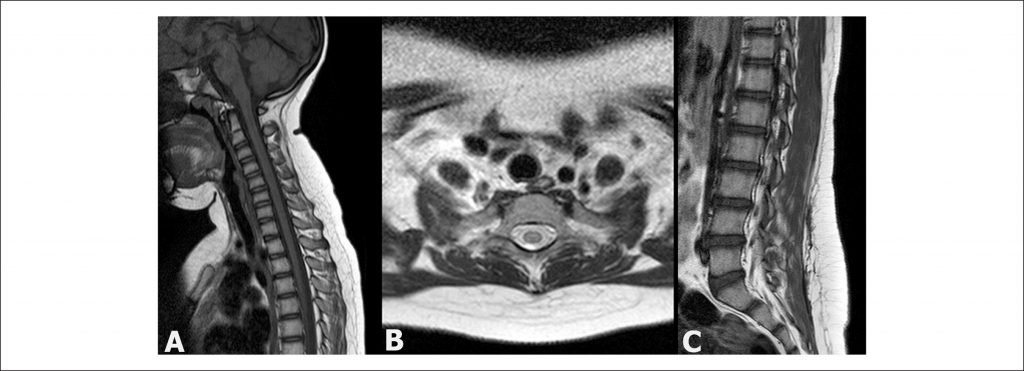Arq. Bras. Cardiol. 2018; 111(5): 755-757
Rare Presentation of Dercum’s Disease in a Child with Abnormalities in Lipoprotein Metabolism
DOI: 10.5935/abc.20180191
Adiposis dolorosa, or Dercum’s disease, is a subcutaneous accumulation of fat in the body accompanied by intense, chronic, and symmetrical pain, often disabling, and usually not responsive to conventional analgesics. It was first described by Dercum, recognized as a separate disease in 1892, and further reported by White in 1899. Termed in the literature Dercum’s disease, Morbus Dercum, lipomatosis dolorosa, adiposalgia, adiposis dolorosa, and adipose tissue rheumatism, this condition is more prevalent in young women, aged 35 to 50 years, and affects preferably those in the post-menopause phase.–Adiposis dolorosa can also occur in multiple familial lipomatosis, a condition associated with multiple lipomas. Other symptoms and signs include psychiatric (depression, anxiety, sleep disturbances, memory and concentration impairment), cardiovascular (tachycardia), pulmonary (shortness of breath), rheumatological (fatigue, weakness, joint and muscle aches) and gastrointestinal (bloating, constipation) disorders.
Dercum’s disease was described as a general disease of the lymphatic system. In 2014, Rasmussen et al. suggested that this is a lymphovascular disorder with abnormalities in the adipose tissue deposition and lymphatic transport, showing that lipomas appeared to be fed and drained by functional lymphatics. In addition, Huang et al. have reinforced the importance of lymphatic system in cholesterol transport, showing the association with ApoA1, HDL formation, and lymphatic transport to the blood for scavenging by the HDL receptor, or scavenger receptor B1.
[…]
2,430

